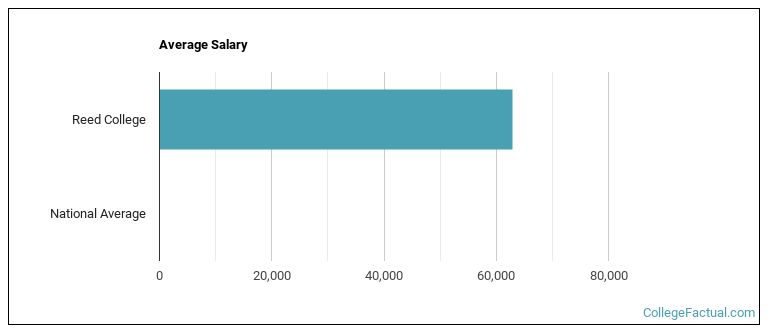 by our College Data Analytics Team
by our College Data Analytics TeamExplore the best ranked schools for the programs you are most interested in.
Reed landed the #1,414 spot in College Factual's 2025 ranking of best overall colleges in the United States. The higher ed experts analyzed 2,152 colleges and universities across the nation to determine this ranking.
Reed also holds the #21 spot on the Best Colleges in Oregon ranking.
If you're applying to Reed College you'll face some tough competition, since the school's acceptance rate is only 31%. Definitely don't wait until the last minute to submit your application, since applying early may be in your favor.
About 47% of students accepted to Reed submitted their SAT scores. When looking at the 25th through the 75th percentile, SAT Evidence-Based Reading and Writing scores ranged between 690 and 750. Math scores were between 630 and 750.
The student to faculty ratio is often used to measure the number of teaching resources that a college or university offers its students. The national average for this metric is 15 to 1, but at Reed it is much better at 9 to 1. That's good news for students who want to interact more on a personal level with their teachers.
When estimating how much access students will have to their teachers, some people like to look at what percentage of faculty members are full time. This is because part-time teachers may not have as much time to spend on campus as their full-time counterparts.
The full-time faculty percentage at Reed College is 95%. This is higher than the national average of 47%.
The freshmen retention rate of 86% tells us that most first-year, full-time students like Reed College enough to come back for another year. This is a fair bit higher than the national average of 68%. That's certainly something to check off in the good column about the school.
Students are considered to have graduated on time if they finish their studies within four years. At Reed the on-time graduation rate of first-time, full-time students is 62%. That is great when compared to the national average of 33.3%
Find out more about the retention and graduation rates at Reed College.
During the 2017-2018 academic year, there were 1,366 undergraduates at Reed with 1,338 being full-time and 28 being part-time.
| $0-30 K | $30K-48K | $48-75 | $75-110K | $110K + |
|---|---|---|---|---|
| $15,460 | $9,629 | $16,043 | $27,015 | $45,802 |
The net price is calculated by adding tuition, room, board and other costs and subtracting financial aid.Note that the net price is typically less than the published for a school. For more information on the sticker price of Reed, see our tuition and fees and room and board pages.
While almost two-thirds of students nationwide take out loans to pay for college, the percentage may be quite different for the school you plan on attending. At Reed, approximately 46% of students took out student loans averaging $6,315 a year. That adds up to $25,260 over four years for those students.

Get more details about the location of Reed College.

Contact details for Reed are given below.
| Contact Details | |
|---|---|
| Address: | 3203 Se Woodstock Blvd, Portland, OR 97202-8199 |
| Phone: | 503-771-1112 |
| Website: | https://www.reed.edu/ |
| Most Popular Majors | Bachelor’s Degrees | Average Salary of Graduates |
|---|---|---|
| Political Science & Government | 26 | NA |
| Linguistics & Comparative Literature | 21 | $25,561 |
| Child Development & Psychology | 20 | NA |
| Mathematics | 18 | NA |
| History | 17 | NA |
| Fine & Studio Arts | 17 | NA |
| Sociology | 15 | NA |
| Anthropology | 13 | NA |
| General Biology | 12 | $25,596 |
| Slavic, Baltic & Albanian Languages | 12 | NA |
Online courses area a great option for busy, working students as well as for those who have scheduling conflicts and want to study on their own time. As time goes by, expect to see more and more online learning options become available.
In 2022-2023, 170 students took at least one online class at Reed College. This is an increase from the 54 students who took online classes the previous year.
| Year | Took at Least One Online Class | Took All Classes Online |
|---|---|---|
| 2022-2023 | 170 | 0 |
| 2021-2022 | 54 | 6 |
| 2020-2021 | 1,274 | 318 |
| 2018-2019 | 0 | 0 |
If you’re considering Reed College, here are some more schools you may be interested in knowing more about.
Curious on how these schools stack up against Reed? Pit them head to head with College Combat, our free interactive tool that lets you compare college on the features that matter most to you!
Footnotes
*The racial-ethnic minorities count is calculated by taking the total number of students and subtracting white students, international students, and students whose race/ethnicity was unknown. This number is then divided by the total number of students at the school to obtain the racial-ethnic minorities percentage.
References
More about our data sources and methodologies.